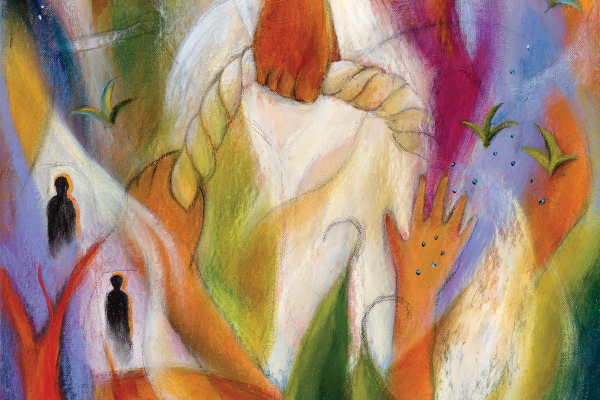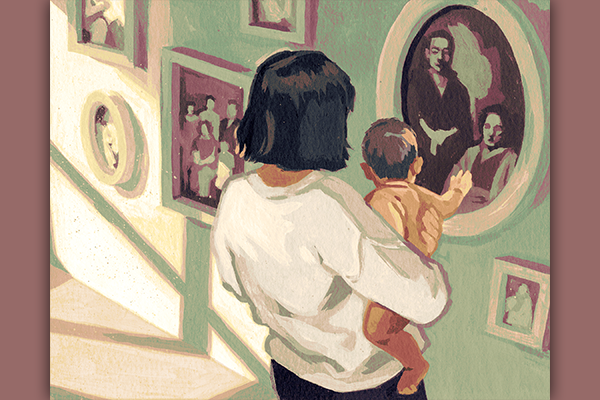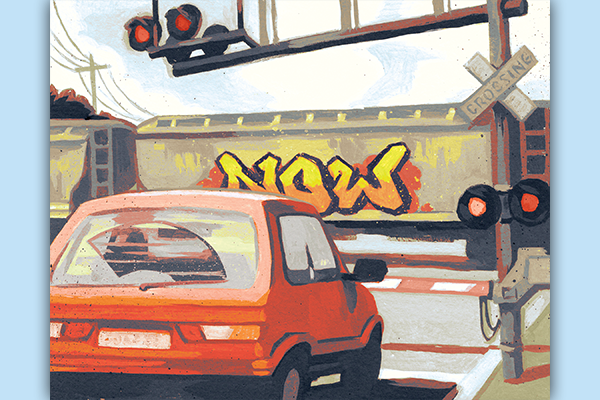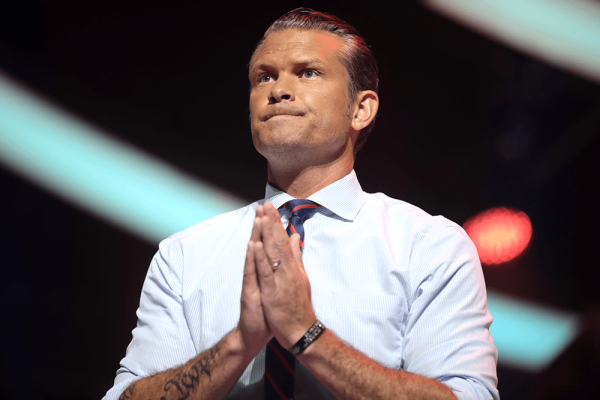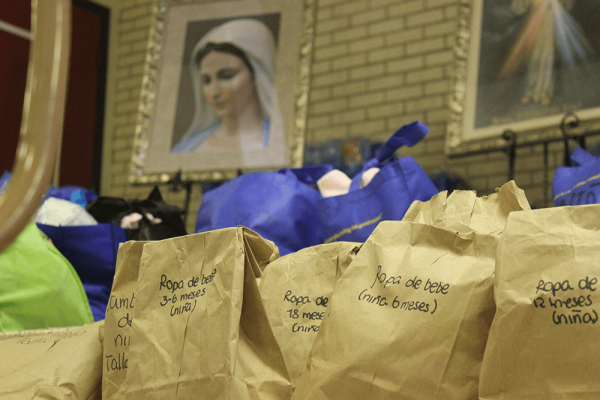LAST YEAR I went on my first cruise. Joined by my favorite kinfolk, I caught up on my rest, sampled craft beer, and enjoyed some really great food. As the boat made its way to the Caribbean and Cayman Islands, I attended a performance by Delta Rae, a rock and folk band with Southern roots and a flair for storytelling. I was moved by many of the songs they performed that night, but it was their song “Hands Dirty” that stayed with me long after we disembarked.
The song gives voice to a woman who, like many in the service industry, works hard but doesn’t catch a break. In the chorus, vocalists Brittany Hölljes and Liz Hopkins sing:
I get my hands dirty
I show up so early
They show me no mercy
So I just keep working
Maybe God could save me
In this song I heard someone whose work had never been recognized. I heard echoes of all the ways our society has continually undervalued women’s labor—especially the labor of women of color, who are disproportionately marginalized in the workforce. Yet even as this woman experienced the sharp end of capitalism’s stick, the song made it clear she wasn’t giving up; she was going to keep working, imagining the future could be different. And as I listened, I thought: Isn’t that our work right now—to get our hands dirty? To imagine a different way of being and becoming, take a leap of faith, dig deep, and roll up our sleeves? And, if that is our work, do we have the courage to do it?
Firsthand experience
A FEW MONTHS ago, I came across a photograph on Instagram based on Caravaggio’s famous painting “The Incredulity of Saint Thomas.” In Caravaggio’s painting, the disciple Thomas is depicted reaching into the flesh of Jesus, sinking his hands into the broken, yet risen flesh of the Christ. But in the picture I saw on Instagram—the work of Swedish photographer Elisabeth Ohlson—there was a nonbinary transgender person in the place of Jesus and an onlooker’s finger probed the scar left by chest surgery, a procedure that allows people to be more aligned with their understanding of their gender.
The story of Jesus’ appearance to Thomas in John 20:24-29 is one of my favorites. Most often, we interpret Thomas as the one who doubted—the one who simply refused to believe in what was possible. Then Jesus appears and something in Thomas changes; he is renewed by touching the wounds of the Risen Christ.
But I see Thomas as someone who took a risk and plunged his hands into Jesus’ broken flesh. The word in the story of Thomas that is usually understood as doubt comes from the Greek apistis, with a- meaning the negation of something and pistis meaning belief or believing. So according to John’s gospel, Thomas wasn’t doubting, he was not believing. To many folks, “doubting” and “not believing” sound like synonyms, but their meanings are different. Doubt means a lack of certainty or a lack of understanding about something or someone, while “not believing” is the orientation of not having enough data or experience to fully believe. So as I understand this story, when Thomas discovered he couldn’t fully believe, he sought out the direct experience he needed to bridge the remaining distance. In other words, Thomas got his hands dirty in order to believe.
What happens when Thomas sinks his fingers into the wounded side of the Risen One? In these few short moments, a kind of transformation occurs; Thomas was changed because of firsthand experience—literally. What Thomas touched with his fingers allowed him to believe. And for today’s followers of the Way, this points to an important practice: experience. Without experience of the ongoing realities of injustice around us, such as homelessness (which disproportionately impacts youth and children), or a lack of access to health care (which impacts almost all of us), or any other structures of evil that keep us from fully flourishing, we cannot imagine a different future or even a different now. The story of Thomas reminds us that transformation can occur in the moments when experience and imagination come into contact with one another. In the midst of turmoil and agony, these moments help us forge a different way forward.
Thomas asks to get his hands dirty in the flesh of Jesus before he will consent to believing the Resurrected One. And isn’t that our story, too? We don’t believe in the seriousness of—or sometimes even the existence of—homelessness, white supremacy, or discriminatory barriers that keep transgender persons from adequate housing, food, and safety until we see for ourselves these things are true. So often it’s tempting to think that if something doesn’t happen to us directly, it isn’t real. And so, like the Thomas figure in Caravaggio’s painting and Ohlson’s photograph, we need to sink our hands into the woundedness of today’s world.
Sinking in
IN CHARLOTTESVILLE, VA., in August 2017, I got my hands dirty and was baptized in cans of urine and tear gas.
Standing with other progressive religious folks on the corner of 2nd and Water Streets, wearing khaki shorts, a sleeveless clergy shirt, and my red and yellow protest stole emblazoned with a resistance fist and “Black Lives Matter,” I watched violence unfold around us. I had gone to Charlottesville to join a group of clergy who wanted to provide a counterwitness to the white supremacist and neo-Nazi rally happening in the city. As we stood together, a crowd of at least 200 people yelling disparaging words and chanting neo-Nazi slogans surged in our direction. In response, the security team that was keeping watch over us throughout the protest hustled us into a fenced-in area. As Virginia state police officers stood watching nearby, people who we presumed were neo-Nazis began hurling cans of concrete into our area. Not long after that incident, someone began throwing cans of urine, and the police started using tear gas. I later found out that our hotel had been compromised, and we had to move to a more secure location in the same town.
Before that day, I believed that white supremacy and racism were real, but I didn’t really think that kind of hate could be so strong—like Thomas, I didn’t fully believe. But after Charlottesville, my body sank into this reality and I truly believed. I could palpably feel evil in the world, and my entire orientation to anti-violence and anti-racism shifted.
I used to think that the structure of supremacy culture (white supremacy, economic supremacy, and militarism) was conceptual, but my firsthand experience in Charlottesville showed me otherwise. Now I work to dismantle all sorts of supremacies that work in tandem with white supremacy, so that we can inhabit the kind of world we long to inhabit. This is not easy work; it requires my daily divestment from the easier route of not believing that violence and hate are real, impacting us all every day. Now I am committed to eradicating supremacy culture from our world, and I have taken a leap of faith and risk in doing so. I see this work as deeply rooted in the ways we relate to one another, how we treat one another, and how these relationships build a future for a better democracy—one that claims equity for all. My time in Charlottesville catalyzed this leap of faith for me. It also required me to seek out tangible ways to build liberative relationships that create conditions for the beloved community to emerge.
These wounds
I THINK GETTING our hands dirty is connected to salvation. No, not the eternal life kind of salvation—I’m talking about our salvation from the oppression and hell of today that keeps a noose around all of our necks: things such as racism, unfettered capitalism, a lack of affordable housing, or food insecurities. That kind of salvation doesn’t come just from gathering at church, believing in God, or understanding the doctrines of the church; it comes from how we live. And that means we have to change our behavior.
But we can’t rely on the current system to show us how we need to change. It took the death and resurrection of Jesus for the disciples to get their acts together and actually continue the movement Jesus started. And now it’s our job to touch the wounds caused by homelessness, poverty, white supremacy, global capitalism, climate change, the separation of children from their parents at the border, and gentrification—and believe the future can be different.
What might that look like? What might it look like if we took a trip to the border to actually see what’s going on there, or read different news sources that give fuller accounts of the immigration battles? What if we surveyed where the grocery stores are in our city or neighborhood and considered where most low-income housing is located? How might we educate ourselves on pressing social concerns that help us believe in deeper ways the pain of those who suffer or don’t have housing or access to health care or groceries? What if we actually talked to people on the side of the street who ask for money, and get to know their stories? What happens when we come close to suffering and poverty—close enough that it creates folds of empathy in us that cause us to act differently? That is getting our hands dirty and sinking our hands into the woundedness of this world.
I’ll be honest: Like Thomas, I don’t always believe. I don’t always believe our work will make a difference, and I question our capacity to make the lasting change that can revolutionize our world. But like Thomas, who sunk his hands into the wounds of the Risen One, when I come close to suffering and actually sink my hands into the wounds of this world, I am transformed. I am renewed and come to have hope in a different world, one where the reign of God is made manifest right before my eyes. May you go and do likewise!
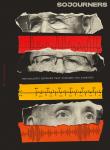
Got something to say about what you're reading? We value your feedback!
